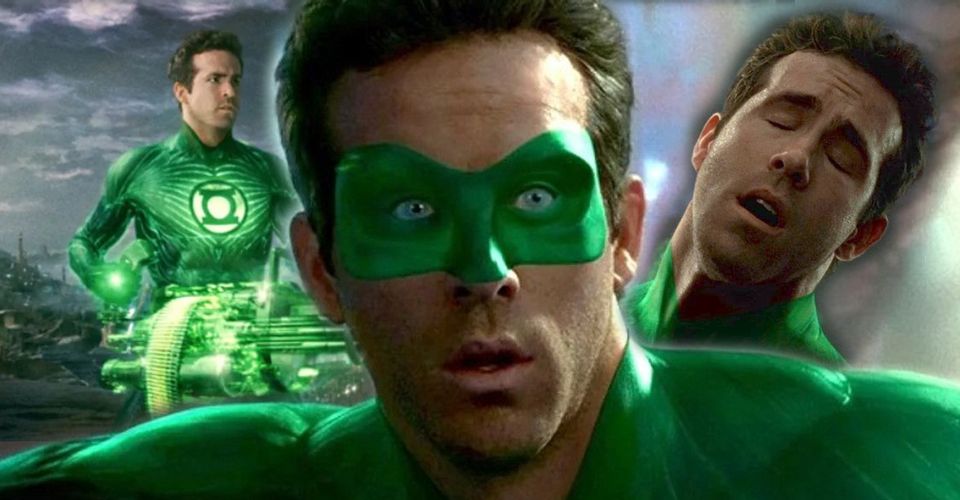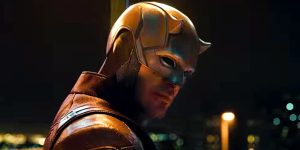Green Lantern: What Went Wrong With Ryan Reynolds’ DC Movie

What went wrong with Ryan Reynolds’ DC movie, Green Lantern? As rumors circulate that Ryan Reynolds could be coming back to the DC Extended Universe with a cameo as Green Lantern in Zack Snyder’s Justice League, as well as a new Green Lantern series coming to HBO Max, Ryan Reynolds’ 2011 foray into big-screen DC Comics adaptations Green Lantern deserves a closer look. Fans of the iconic, fearless ‘space cop’ Hal Jordan were rightfully excited by the promise of Green Lantern up on the big screen, but the film’s disappointing box office combined with abysmal reviews have cemented Green Lantern as one of the most notoriously bad comic book adaptations of the 2010s.
Ryan Reynolds himself has been outspoken about his shame regarding Green Lantern, even recently disparaging the movie in a commencement speech he gave to the teens of Kitsilano Secondary School. The movie was also the butt of a joke in not only Deadpool — where Reynolds’ Wade Wilson asks for his superhero costume not to be green, or animated — but also at the end credits of Deadpool 2, as the Merc With a Mouth goes back in time to shoot Ryan Reynolds in the back of the head as he holds the screenplay for Green Lantern in his hands in a hilariously-meta moment.
So what went wrong with Ryan Reynolds’ first — and to date, only — DC Comics movie, Green Lantern, in order to earn such distaste from not only fans and critics, but its main A-list star? Why did Green Lantern only make $220 million worldwide on a $200 million budget — a figure that doesn’t even include its including marketing costs? Why does the film still sit at a paltry 26% on Rotten Tomatoes? Green Lantern was expected to launch an entire franchise, replete with post-credits scene revealing the villain — Sinestro — for its planned sequel, but was ultimately swept under the rug by Warner Bros. The following is everything that what went wrong with Green Lantern.
Green Lantern Had Terrible CGI

Given that Green Lantern is now nine years old, it would be easy to look back on the movie and argue that the special effects — some of the worst on screen — wasn’t up to par in 2011, giving the movie a grainy, lifeless ‘cut and paste’ feel. The argument doesn’t hold water, however, as James Cameron was making $2.8 billion dollars worldwide just two years earlier with the groundbreaking CGI of Avatar. In comparison to the lush, realistic, computer-generated world of Pandora, the Green Lantern Corps homeworld, Oa looks as if it had either a fraction of the budget necessary to pull it off (Avatar‘s budget was $37 million more than Green Lantern‘s) or no clear sense of direction from the visual effects house. A quick glance on IMDb reveals that the visual effects were deployed by roughly 30 different companies, which may account for why the CGI is so drab and muddled in the finished film.
Green Lantern should have been one of the most inventive superhero films ever made, considering the fact that lead hero Hal Jordan has a magic ring which allows him to conjure any shape he can think of, formed out of hard green light. Instead, audiences receive a smattering of yawn-inducing weapons used by Green Lantern, which is a problem that originates from the screenplay. Jordan at different points employs a minigun, a drill, a chainsaw, a pair of fighter jets and finally a giant fist to knock villainous cloud Parallax into the sun. At one point he conjures up a sword with the ring whilst training with Sinestro, which even Sinestro isn’t impressed by; “Swords. How human.” Unimaginative constructs combined with bad CGI make Green Lantern feel like a waste of potential, and ensure it will always be remembered as an expensive film with bad CGI.
The Cast Is Wasted — And Reynolds’ Hal Jordan Isn’t A Great Hero

On paper, Green Lantern had an impressive cast. Ryan Reynolds was fresh off of making $317 million in box office receipts opposite Sandra Bullock in The Proposal, and had made a critically-lauded turn in 2010 thriller Buried, playing a man kidnapped in Iraq and buried underground for ransom. The latter even ended up on the IMDb list of Ryan Reynolds’ best films. Reynolds is able to flip-flop between comedy and drama with ease (see also: Smokin’ Aces, Deadpool 2, etc.) and it’s likely for this talent that Warner Bros. picked him over the other contenders for the role of Hal Jordan (rumored to be the likes of Bradley Cooper, Jared Leto and Justin Timberlake). The knowledge of his talent in front of the camera makes his final performance disappointing, as Hal Jordan ends up coming off bland and lifeless. Aside from a few early, flirtatious scenes with future-wife Blake Lively (herself playing the role of Carol Ferris so straight that she comes off as wooden), Hal Jordan loses much of his spark as Green Lantern moves along. Whether this is bad writing or bad direction or a combination is hard to determine.
The other cast members don’t fare as well. Tim Robbins (The Shawkshank Redemption) doesn’t seem to know what movie he’s in, nor does he seem to care; Peter Sarsgaard goes over the top with ‘daddy issues’ as Hector Hammond; Michael Clarke Duncan looks like he’s having fun as fan-favorite Green Lantern drill sergeant Kilowog, but his lines may as well be spoken by a rote drill sergeant on Earth, not a fun alien character from another planet. Mark Strong makes for a great Sinestro, but it’s obvious the filmmakers are holding back on his screen time so that he has more to do in the planned sequel — which never happened, and is therefore a waste. Angela Bassett is underwritten as Doctor Waller (a shame for an actress of such caliber) and Taika Waititi is saddled with the ‘minority best friend’ trope. No wonder Waititi and Reynolds pretend not to remember Green Lantern.
Green Lantern Chose The Wrong Villain

Squaring off against evil Guardian Parallax was the primary villain chosen for Green Lantern, but the decision hurt the movie rather than helping it. Parallax is one of those grand villains that is built up to in the comic book source material, much like Galactus in Marvel Comics. Even the Tim Story Fantastic Four movies at Fox waited until their sequel (Fantastic Four: Rise of the Silver Surfer) to introduce Galactus. With Green Lantern, the filmmakers have Hal Jordan face off against Hector Hammond first and then jump straight to the biggest villain Green Lantern has ever faced in the comics; in the context of the movie, he’s only been Green Lantern for a few days. It plays as too much, much too soon.
The filmmakers also did not learn from the mistakes of Fantastic Four: Rise of the Silver Surfer, which came under criticism for depicting Galactus as a giant cloud. Here, Parallax is depicted as a giant cloud (albeit with a discernible face and voice, but a cloud nonetheless). Clouds don’t make for very threatening villains, resulting in uninspiring stakes for the lead character. Green Lantern would’ve been better off concentrating on Hector Hammond as the primary villain and exploring the schism in ideology between Hal Jordan and his mentor, Sinestro; rather than what happens in the finished movie, with Sinestro being supportive of Jordan as the end credits rolled, only to tack on an end credits scene showing Sinestro fashioning a yellow power ring out of nowhere. Green Lantern sacrifices character development with Sinestro — and exploring him as a secondary villain — in favor of Hal Jordan fighting a giant, yellow cloud.
Behind The Scenes Issues Hurt Green Lantern

Greg Berlanti, the writer-director-producer perhaps now most well-known for his ‘Berlanti-verse’ (or as it’s better known, the Arrowverse) of CW shows, was once attached to write and direct Green Lantern. He employed writers Michael Green (Logan) and Marc Guggenheim (Arrow) to work on the script with him, from which Guggenheim states they drew from Geoff Johns’ Secret Origin storyline in DC Comics. Hector Hammond was to be the main villain, with no mention of Parallax (which would have made for a more cohesive, driven storyline), and additional, fun cameos from the likes of Guy Gardner.
Ultimately, Warner Bros decided to go with Martin Campbell (Goldeneye) to direct, instead attaching Berlanti to helm This Is Where I Leave You (which was ultimately directed by Shawn Levy in 2014). The abrupt shift in direction — and resultant effect on the screenplay (rewritten by Michael Goldenberg) were compounded by studio interference, which Campbell has been very vocal about. The result makes for a muddled, confused film, which isn’t sure where its focus should lie; the romance between Jordan and Ferris; Jordan’s training on Oa; his conflict with Hector Hammond; Hammond’s conflict with his father; Jordan’s conflict with Sinestro and his final confrontation with Parallax make for an overstuffed film which still ran less than two hours. Perhaps if Berlanti were to have been able to steer his own vision and original script, fans would’ve ended up with a much more palatable big-screen Green Lantern. The director even told THR that he still “stands by” his unused script, and is saddened that his name is attached to the Martin Campbell film, of which he feels he had nothing to do with. Sadly, audiences will never know whether the Berlanti version of Ryan Reynolds’ Green Lantern could have been something great.
About The Author


















